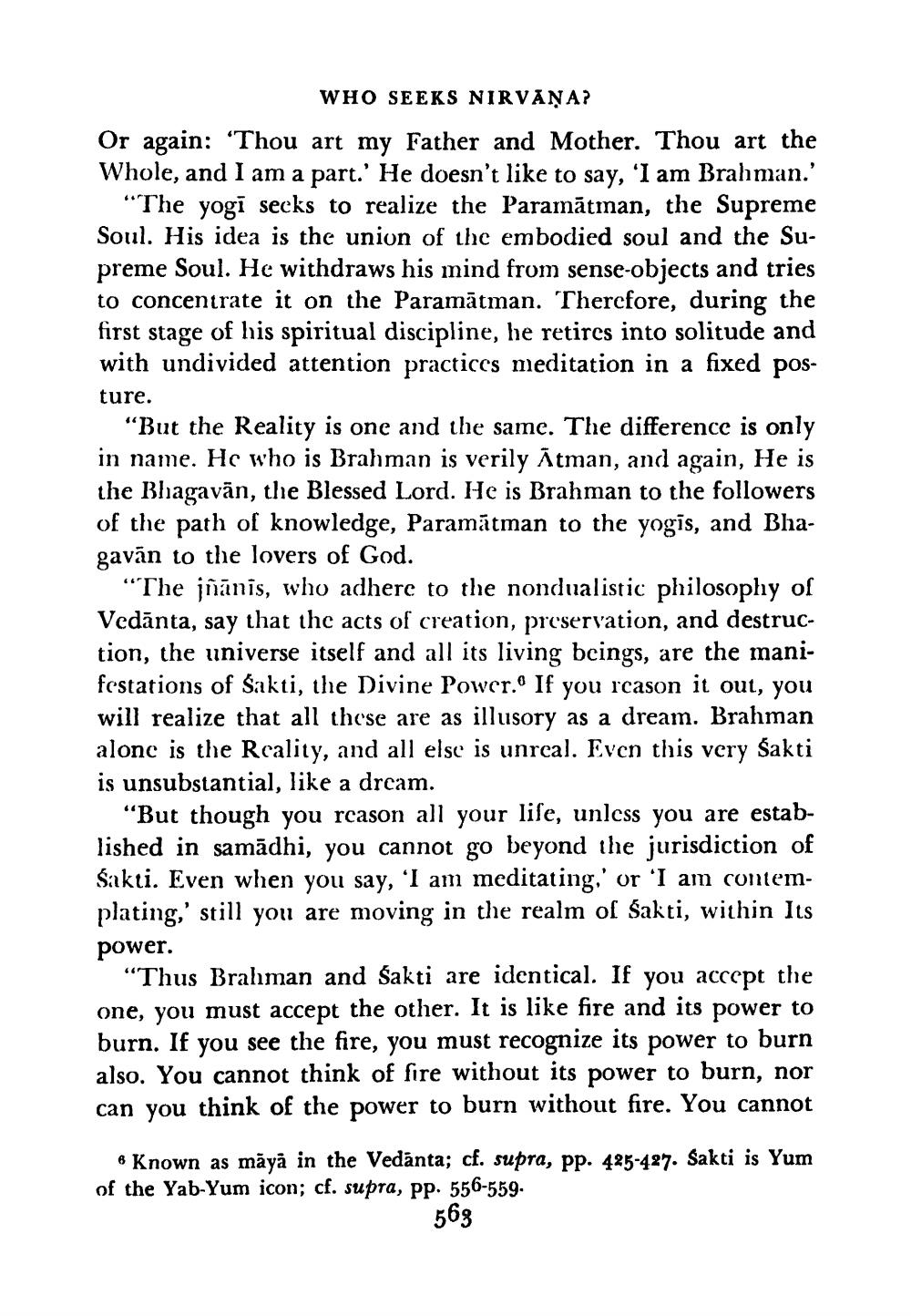________________
WHO SEEKS NIRVANA?
Or again: 'Thou art my Father and Mother. Thou art the Whole, and I am a part.' He doesn't like to say, 'I am Brahman.'
"The yogi secks to realize the Paramatman, the Supreme Soul. His idea is the union of the embodied soul and the Supreme Soul. He withdraws his mind from sense-objects and tries to concentrate it on the Paramātman. Therefore, during the first stage of his spiritual discipline, he retires into solitude and with undivided attention practices meditation in a fixed pos
ture.
"But the Reality is one and the same. The difference is only in name. He who is Brahman is verily Atman, and again, He is the Bhagavan, the Blessed Lord. He is Brahman to the followers of the path of knowledge, Paramātman to the yogis, and Bhagavan to the lovers of God.
"The jñānīs, who adhere to the nondualistic philosophy of Vedanta, say that the acts of creation, preservation, and destruction, the universe itself and all its living beings, are the manifestations of Sakti, the Divine Power. If you reason it out, you will realize that all these are as illusory as a dream. Brahman alone is the Reality, and all else is unreal. Even this very Šakti is unsubstantial, like a dream.
"But though you reason all your life, unless you are established in samādhi, you cannot go beyond the jurisdiction of Sakti. Even when you say, 'I am meditating,' or 'I am contemplating,' still you are moving in the realm of Sakti, within Its power.
"Thus Brahman and Sakti are identical. If you accept the one, you must accept the other. It is like fire and its power to burn. If you see the fire, you must recognize its power to burn also. You cannot think of fire without its power to burn, nor can you think of the power to burn without fire. You cannot
• Known as māyā in the Vedanta; cf. supra, pp. 425-427. Sakti is Yum of the Yab-Yum icon; cf. supra, pp. 556-559.
563




